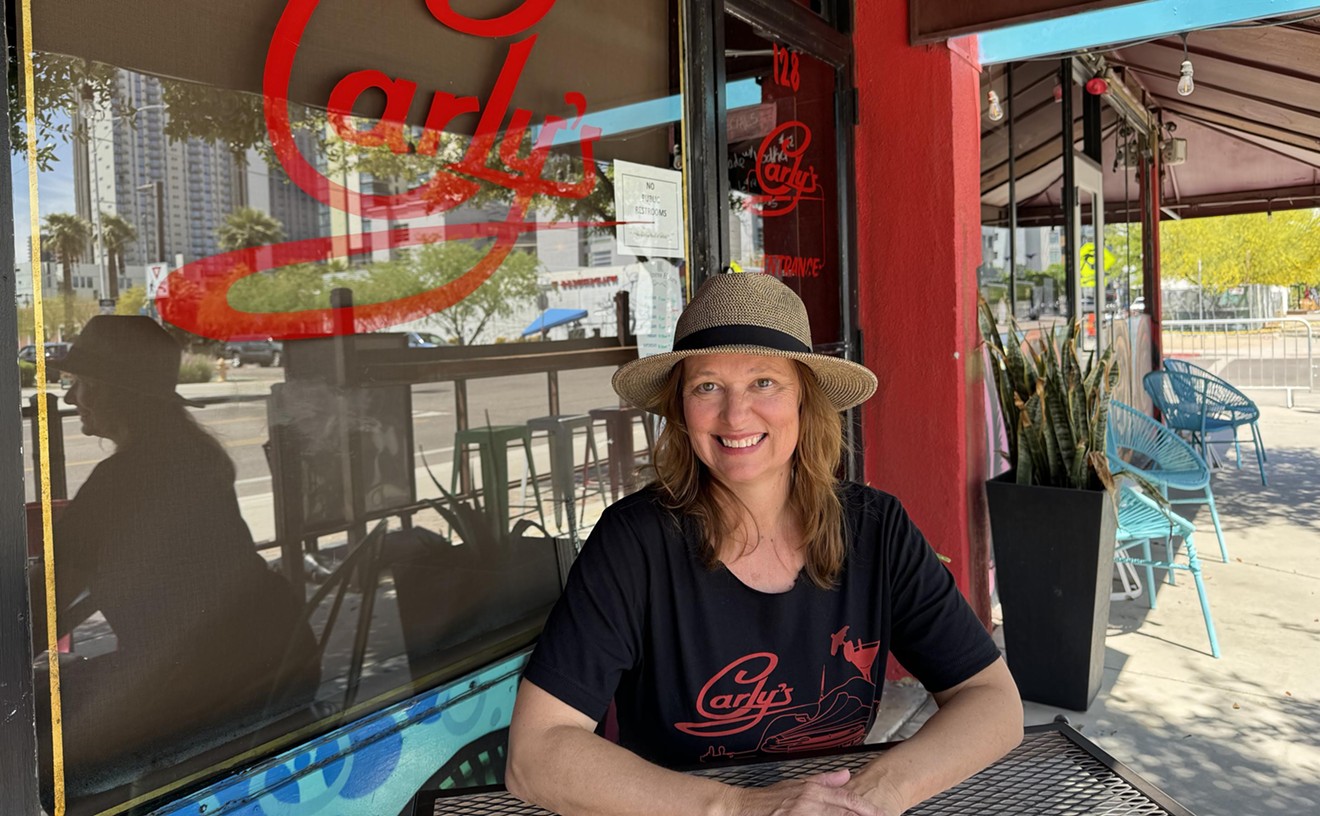With the transition of seasons, your veggie garden is transitioning, too. If you're tired of canning -- and friends and relatives cannot keep up with your bounty -- pickling some of your crop adds flavor and preserves the vegetables at the same time. Nearly every culture has its version and methods for pickling. Pickled items are considered high in acidity and there's increasing studies noting their beneficial nutritional qualities.
Dean Lambros owns Pickled Perfection, and if you frequent Phoenix-area farmers markets, you've probably sampled some of his company's unique foods. Chow Bella caught up with Lambros to learn more about pickling and what to consider when trying the process at home.
See also: - Pickled Perfection in Just Three Days: Locally Made - DIY Bread and Butter Jalapeno Pickles
Essentially, to pickle any food is to immerse it in a vinegar solution called a brine, Lambros' brine recipe is a secret -- not even his sons know it! Methods for pickling include quick, salt-brined, vinegar-brined, and fermented.
Pickled Perfection uses the quick process, and Lambros tried to explain the difference between quick pickling and curing, which are quite similar.
"Quick pickling can be tricky if the brine solution isn't just right and the acidity level of the vinegar isn't at the right percent. It won't pickle rapidly. In most cases, the difference is the brine and its ability to cure quickly or over time," Lambros says. In most cases curing might involve more sugar in the brine and often refers to the meat-preservation process.
Don't be afraid if you don't get it right the first time. "We nailed it after much testing and the fact that we have sold tens of thousands of pickled product units speaks volumes to the quality -- our customers love it!," he says. Lambros' company uses only locally grown items, so rest assured, something in your garden is pickle-worthy.
To do a quick pickle at home, make a brine with vinegar, salt, and any spices (like cloves, dill weed, garlic mustard seed and peppercorn) or aromatics that appeal to your palate. You might even add a bit of sugar. Heat or simmer your brine and then pour over your vegetables and put them straight into the refrigerator in a closed container. The longer the veggies sit in the brine, the more flavor is absorbed.
The process also works "cold." "We do a cold brine where we pickle everything fresh and get it into cold storage for a minimum amount of time before we sell it," Lambros says. You might be wondering how quickly you'll have to eat all of your pickled items. "If our product stays refrigerated or at room temperature, it will keep indefinitely and we have tested quality up to a year. The product will first gain heat as it cures then after approximately three months the heat will dissipate some." Basically, three months is "safe," and there are many websites you can consult for safety recommendations on how much salt and vinegar to use, to ensure food safety.
In a pickle about what to pickle? "When we started this venture four years ago, we had tunnel vision on what you can and cannot pickle. Well, our customers special orders threw that perspective out the window -- we can pretty much pickle anything and have been asked to do from lemons to tomatoes, to beans." Any vegetable that has a crispy content can be pickled. "However the texture of how crisp or mushy is totally up to the customer," he says. "Our mushrooms are our number one sold item."
Delicate things like leafy greens will usually wilt and break down too quickly to pickle. So Swiss chard is "out," but asparagus, onions, garlic, carrots, beans, and cauliflower are "in."
You can even use your brine more than once to create unique flavor profiles. "Our brine solution is a secret. However, when you buy our product you get to do what we call a 'reload.' You can reload your own product in our brine and get up to two more turns of pickled veggies," he says.
If you're still not keen on doing this at home, contact Lambros. "Part of our unique business is our ability to do special orders. We will pickle pretty much anything for any one at a very reasonable cost and in small quantities such as 32 ounces. This is as easy as getting on our website and sending us what you want and which market you want to pick it up at. This year, we are going to start doing small production runs on seasonal product. Be looking for spicy pickled okra and zucchini," he says.










